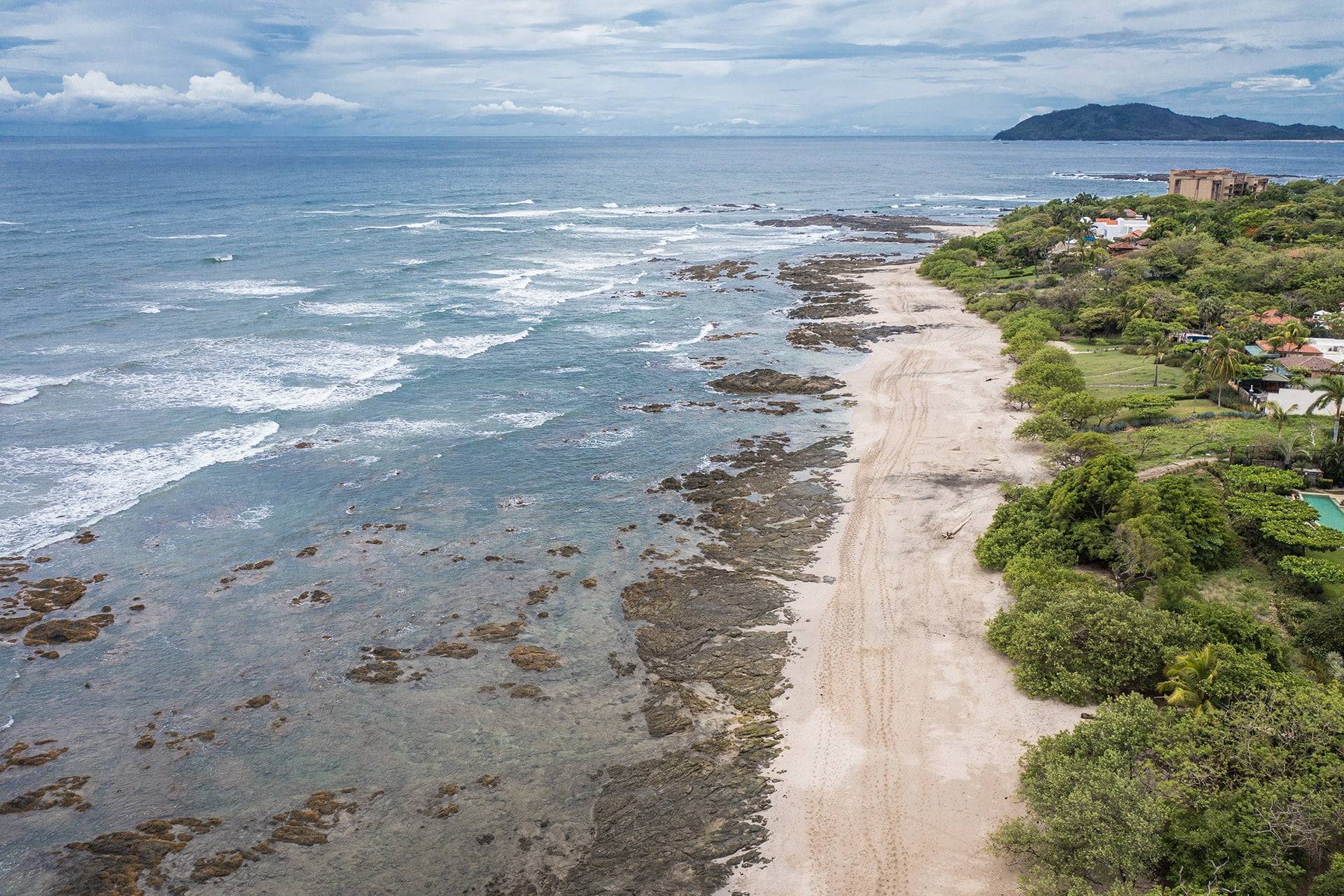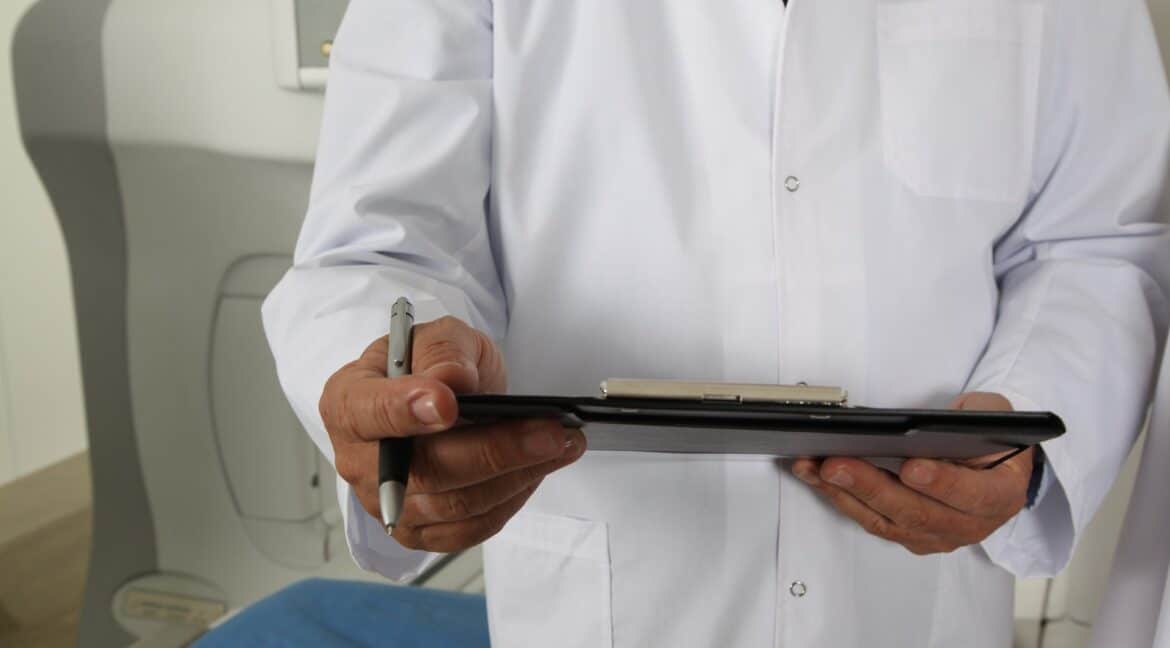One of the most important considerations before moving abroad is your health: your wellbeing, lifestyle, and access to medical care in your new home. It’s a question we get often, so we thought we’d dig into some details on healthcare in Costa Rica.
You can find a lot of Big Claims about Costa Rica’s healthcare, including the off-cited WHO ranking: 36th-best in the world (one spot higher than #37 United States) and a longer-than-average lifespan (as of 2019, 80.3 years vs. 79.1 in the USA). But those are just numbers and, in practice, healthcare is about a lot more than an intangible (albeit impressive) statistic.
So, what is healthcare in Costa Rica really like? In this post, we’re breaking down public (Caja), private, and mixed medicine (medicina mixta) care, with details on costs, pros and cons, and a few insights along the way. (As always, please get in touch if you have specific questions about healthcare or living in Costa Rica.)
Public Healthcare in Costa Rica: The CCSS

Public hospitals in Costa Rica usually offer shared rooms for 6+ patients
The Caja Costarricense de Salud Social, often shortened to la Caja (or, in writing, la CCSS), is the “Costa Rican Social Security Fund” – but not that kind of social security. This is Costa Rica’s public healthcare (and, yes, pension) service.
The Caja can be a huge topic that covers a lot of ground so, for the sake of brevity (and because we’re writing a blog post, not an entire book), we’ll stick to the broad strokes with a few important details. Starting with this: When you become a resident, you will be required to join the Caja.
Monthly Caja Costs
Unfortunately, there’s no one answer here. Officially, a Caja contribution is calculated at 5% to 12% of your monthly income.
In practice, it’s not quite that simple. First of all, many residents don’t work, at least not locally. In that case, your Caja payment would be 12% of your declared monthly income. That said, your mileage may vary.
For starters, “monthly income” is also a debatable term, especially if you don’t work, or you freelance (and earn differently each month), or are retired, or a dozen other possibilities. Furthermore, if you’re over a certain age (60-65; the laws are changing), your monthly quote will be lower because it won’t require a pension contribution*. If you’re married, one spouse may be covered by the other spouse. Etc. etc.
All this said, expect a Caja payment… but we can’t tell you exactly what to expect. As a ballpark figure, you’re most likely looking at $100-$350/month* per individual or couple. But again, your mileage may vary.
*2022 Update: A recent change to resident contribution requirements may significantly increase the monthly payment for certain residency categories. Immigration lawyers plan to challenge this change.
November 2022 Update: After various legal interventions, CCSS contribution fees have been reverted for pensionado (retired) residents. The retirement contribution may also be waived for other residents (in other resident categories) who do not do not work or generate income in Costa Rica.
Cost of Caja Healthcare
This one’s an easy one: Beyond your monthly payment (known locally as a contribución or “contribution”), you’ll have exactly zero out-of-pocket costs for Caja services. That’s right: You’ll never pay a single colón for any Caja healthcare or prescription medicine, ever.
Pros and Cons of Caja Healthcare
Here’s where we get to the section that could fill a book. There are so many upsides and downsides to the Caja that it’s hard to summarize. We’ll do our best.
Before we get into it, know that many Costa Ricans live their entire lives under only Caja healthcare. It’s doable – but it probably won’t be like what you’re used to. Here’s what we mean:
Excellent Preventive Healthcare
As a recent New Yorker article highlighted, The Caja shines at public health – as in, keeping the public healthy (as opposed to treating a sick public.) In large part, that boils down to preventive healthcare: Get into the system and you’re on the road to regular blood panels (and other tests), check-ups/check-ins, colonoscopies/endoscopies, men’s & women’s health visits, and more.
Superb Emergency Healthcare
Ask almost anyone and you’ll hear the same thing: If you break a bone or have an accident, the public hospital is a great place to be. Not only will you receive excellent emergency care but, come what may, you won’t pay anything, no matter how many life-saving measures are required.
And No Such Thing as a Pre-Existing Condition
You read that correctly: With the Caja, there’s no such thing as a preexisting condition. Come as you are.
But, There Are Long Waits for Almost Everything Else
Preventive medicine can be scheduled ahead: See you in six (eight… twelve…) months! Emergency medicine is literally green-lighted to the front of the line. Everything else… well, be prepared to wait. Hoping for a not-so-urgent knee or hip replacement? Get in line. (And FYI, that line could take a few years.)
The Patient-Doctor Relationship Is Somewhat Impersonal
Public healthcare can be very formulaic and, among other things, that means that you won’t “choose” your doctor or your clinic or your anything, really.
You’ll go to your local clinic or Ebais, where you’ll be assigned a doctor based on your residence. Need to see the specialist? They’ll be here everything third Tuesday and no, it’s not the same specialist you saw last time; it’s whoever is assigned to the next pass-through. Even if you’re pregnant or planning a major surgery, your prenatal/pre-op visits likely won’t be with the same professionals every time, and your birthing experience or surgery won’t be with anyone you’ve met previously.
And Some Services/Medicines Just Aren’t Available
The services you’re used to – for example, a 20-week pregnancy ultrasound or a specific type of imaging – may not be considered “necessary” to the Caja. And if it’s not necessary, you’re not getting it. Ditto for medications: The Caja has a set list of medicines (mostly generics) that it provides; if your prescription from back home isn’t on that list, the Caja will offer a substitution. If you choose not to take the substitution, you’ll have to pay out-of-pocket (privately) for your medications.
In summary, it’s safe to say that there’s not a lot of choice with public healthcare and, sometimes, you’ll have to advocate for what you need but, when you receive healthcare, it’s of a high caliber.
Private Healthcare in Costa Rica

Speaking of healthcare in Costa Rica, we’ll bet you’re going love the country’s approach to staying well vs. curing illness. And the first has a lot to do with long walks on the beach, fresh fruits & vegetables, and surfing until sunset!
Ah yes, another topic that could fill chapters and chapters of a book. Another topic that we’ll try to distill down to some of the most salient details.
Costs of Private Healthcare
Don’t blame the messenger, but this is another one of those can’t-be-answered questions. But, for different reasons than for public healthcare.
Typically, private healthcare costs are broken down into three possibilities:
Option 1: Pay Out-of-Pocket
If you plan to use private healthcare sparingly, you’ll probably elect to pay out-of-pocket for the occasional visit. To see a general practitioner (GP), expect to pay about ¢25,000-¢45,000 ($40-$65), depending on the doctor and your location. Specialists (ex. an ENT or allergist) will usually run ¢50,000-¢80,000 ($80-$130) per visit.
Option 2: Purchase Private Insurance
If you plan to opt for mostly private healthcare, with some pinch-hitting from the Caja for potential emergencies, then you’ll most likely opt to purchase private insurance.
As it does elsewhere around the world, policy premiums vary depending on many, many factors – among them, your age and preexisting conditions. Yes, preexisting conditions are important to private insurance (and can really hike up your costs, if they’ll cover you at all). That said, premiums locally usually fall into the $125-$500+ per month and typically have a deductible AND still, only cover up to 80% of your costs.
Option 3: Buy a Medical Discount Plan
Discount plans, including the ever-popular Medismart, offer a sort of middle-ground for private healthcare, offering discounts on in-network care, in exchange for a very modest monthly fee (currently, <$14 for the primary plan-holder and <$7 for additional plan members).
Pre-existing conditions are fully covered but keep in mind, this isn’t insurance: You’ll pay for everything out of pocket, only at a reduced out-of-pocket rate. For example, a GP visit is ¢8,000 ($13) instead of ¢40,000 ($65) and a visit to the cardiologist will run you ¢23,000 ($37) instead of ¢57,000 ($92). Still, you’ll pay for everything, so if you need surgery, prepare to pay not only your doctor but your hospital fees, your OR fees, your medication costs, your overnight costs, and etc. etc.
Pro Tip: Most residents, if they’re inclined toward private healthcare, run a split between public and private (also see below, re: Medicina Mixta) and stick to private healthcare for smaller costs and public healthcare for major surgeries, emergencies, and other big-ticket healthcare items.
Pros and Cons of Private Healthcare
In addition to the cost, here’s what you should know about private healthcare in Costa Rica:
The Costs Add Up
As you may have gleaned from the above, the cost of private healthcare varies. And it can vary wildly. If you’re older (say, 55+), prepare for your private insurance premiums to hike. (Older than 80 and they can climb sky-high.) Require a specific medication that’s not on the Caja list? It can be 4x, 5x, 10x the cost you pay back home.
That said, Costa Rica’s out-of-pocket healthcare costs, even for private healthcare, don’t even begin to approach U.S. costs. For example, while birth can cost $10,000-$25,000 in the U.S., it’s usually about $5,000 in Costa Rica (even at the “fanciest” hospitals). Lasik eye surgery? $1,500 vs. $4,500 in the U.S. So, it’s all relative.
But You Can Choose English-Speaking Doctors
One of the perks of private medicine is that you can choose your doctor. Don’t like your choice? You’re free to go somewhere else. And this freedom of choice means you’ll have full access to Costa Rica’s wide network of English-speaking professionals (many of whom studied in the U.S., Canada, and Europe).
And Private Doctors are Everywhere
While with Caja healthcare you’ll have to visit your assigned clinic, Ebais, or hospital, with private healthcare, you can visit anyone, anywhere (unless your private insurance deems otherwise). And that’s a great thing because Costa Rica’s network of private doctors, specialists, labs, and pharmacies is vast, reaching into even the most rural areas.
Wait Times are Short
Need an appointment with a specialist? You can probably get one today. With private healthcare, your wait is almost always very, very short.
And You’ll Be More of a Participant in Your Healthcare Decisions
Whereas with public healthcare in Costa Rica, your attending physician views your need as a true need (and therefore “prescribes” the resulting procedure, surgery, etc., if it’s available at all), with private healthcare, you have more latitude in your healthcare decisions. Want that Lasik surgery? You can have it. Prefer to give birth in a birthing pool or standing up? The choice is yours.
In summary, private healthcare is all about balancing your preference and comfort with your willingness to pay for those things. Again, most residents choose a balance of public and private: When the cost is relatively low, go private; with costlier procedures or surgeries, go public, when possible.
Mixed Medicine: A Balance of Public/Private Healthcare in Costa Rica
Medicina mixta, or mixed medicine, is a popular schema for local healthcare. Without getting into all the technical details, mixed medicine essentially mixes public and private via doctors and specialists who work both for the Caja and in private practice.
So, what’s the big deal? In a nutshell, mixed medicine can help you jump the line: Book a private appointment with a doctor or specialist who also works with the Caja, and you can avoid some long waits. If you’re seeing a specialist, mixed medicine can also offer a fast-track to Caja prescription medications – and an English-language fast-track, at that!
As mixed medicine is really just a mix of public and private healthcare, there are no specific pros or cons, costs or concerns associated with it. Essentially, use it when it works for you. When it doesn’t, revert to your choice of full-public or full-private healthcare.
Questions about Life, Living & Healthcare in Costa Rica?
You have questions, we have answers! Whether you’re already well on your way to residency or just dipping your toes into research, we’d love to help you explore the possibilities of life (and healthcare) in Costa Rica.
At Blue Water Properties of Costa Rica, we’re committed to you. Not to selling you a property or spamming you with all the options, but to helping – genuinely and with good intent – to match you to the perfect property for your needs and wants. We thrive on relationships and promise the fastest communication and best services in the industry.
At Blue Water Properties of Costa Rica, we’re proud to offer some of the best Costa Rica real estate. We have both condos and homes, land and businesses for sale.
Go ahead – try us. Give us a chance to show off our expertise – and wow you with the possibilities! We look forward to it.


